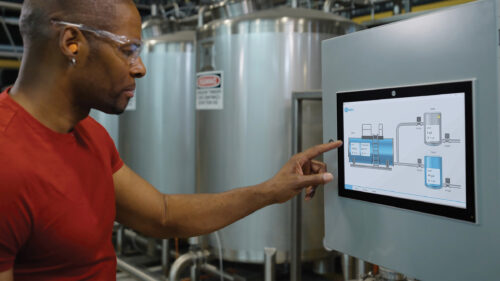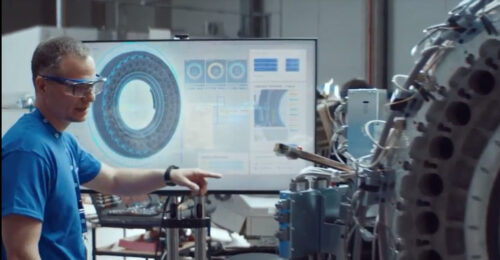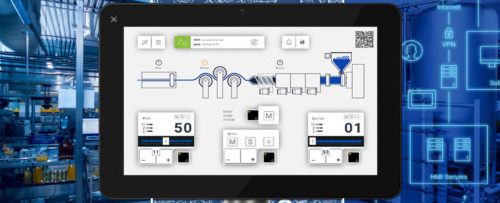Comparing major manufacturing improvement methods – Part 3
Comparing major manufacturing improvement methods — Part 3EDITOR'S NOTE: The past decade has seen the development of a number of manufacturing management concepts. Chief among them are: lean manufacturing, Six Sigma, supply chain management, total productive maintenance (TPM), and reliability centered maintenance (RCM).
|
Comparing major manufacturing improvement methods — Part 3
Reliability centered maintenance
The primary objective of reliability centered maintenance (RCM) is to preserve system function , as opposed to equipment function. This perhaps subtle difference can be readily explained with the example of having two engines on an aircraft, either of which is capable of preserving system function (keeping the aircraft flying) in the event one of the engines fails. Preserving system function is the primary objective for the aircraft.
The methodology can be summarized as follows. It is taken after the engineering approach to failure modes and effects analysis.
-
Identify the functions expected of the system
-
Identify the failure modes which can result in loss of system function
-
Prioritize the functional needs using a criticality analysis of consequences and effects
-
Select the applicable tasks, PM or other actions, which preserve system function.
-
-
It implies that if backup equipment exists, run to failure is acceptable. This practice may or may not be the case, and the better practitioners ensure that any backup equipment is properly cared for.
-
Focus may tend to be primarily PM activities, versus a more proactive, integrated approach, which includes the effects of production, procurement, installation, commissioning, and stores practices.
-
-
Use existing equipment histories and failure modes for initial efforts instead of looking for failure modes which haven’t been experienced. In other words, don’t do RCM on everything or go searching for all possible failure modes until the known ones have been addressed (okay for NASA, but not most plants).
-
Incorporate other methods and models in problem analysis and solving. As a friend of mine once said, “If the only tool you’ve got is a hammer, everything pretty much looks like a nail.”
-
RCM can be an excellent part of an overall maintenance and production strategy
-
Total productive maintenance
-
Total productive maintenance (TPM) is a program originally described by Seiichi Nakajima for improving productivity through improved maintenance and related practices. Some basic tenants of TPM and thoughts on their relationship to RCM are provided below. Indeed, some studies indicate that combining TPM and RCM actually provides a more effective maintenance and reliability model for most batch and discrete manufacturing plants.
-
TPM calls for measuring all losses from ideal production capability using Overall Equipment Effectiveness (OEE):OEE = Availability x Rate x Quality. Knowing all losses from the ideal and their prospective causes helps prioritize RCM analyses, as well as six sigma and lean manufacturing applications and analysis.
-
TPM calls for restoring equipment to a like-new condition. According to RCM studies, up to 68% of equipment failures are infant mortality types. Therefore, verify like-new condition using a stringent installation, startup, and commissioning procedure covering processes and equipment. Also understand failure modes and effects in order to take steps in design, procurement, production, and maintenance to mitigate or eliminate those failure modes. Finally, involve operators in basic care and “condition monitoring” (e.g., process condition, as well as look, touch, feel, etc.), especially at startup, in order to avoid or detect problems early and manage them.
-
TPM calls for operator care and involvement in maintaining equipment, a must in a modern plant. However, the operator often needs to be able to call upon more advanced methods and technologies to solve problems, including RCM, root cause analysis, and predictive maintenance, all of which provide a method for understanding failure modes and their elimination.
-
TPM calls for improving maintenance efficiency and effectiveness, which is also a hallmark of RCM. Many plants make extensive use of preventive maintenance, or so-called PMs. While inspections and minor PMs are appropriate, intrusive PMs for equipment, more often than not, make equipment less reliable. RCM studies indicate that only about 11% of equipment would benefit from an age-related intrusive PM strategy, and that 89% would benefit from a condition-based approach to maintenance. RCM helps determine the most common failure modes, which PM and/or condition monitoring method is most effective, and which equipment deserves attention in design and operations. PM’s are thereby optimized.
-
TPM calls for training people to improve their job skills. RCM helps identify the failure modes caused by poorly trained staff. RCM is highly supportive of TPM, since training needs can be effectively identified and performed.
-
TPM calls for equipment management and maintenance prevention. These are inherent in RCM principles by identifying failure modes and avoiding them via design, installation, operation, and maintenance practices.
-
TPM calls for effective use of preventive and predictive maintenance technology. RCM methods help identify failure modes and when and how to most effectively use preventive and predictive maintenance to detect or avoid failure modes.
-
Some observations and suggestions:
While TPM principles apply to all plants, as a practical matter the actual practice of TPM is better suited to batch and discrete plants, where operators have the equipment “at hand” and can play a greater “hands on” role in equipment care and in measuring losses from ideal production. TPM can be more difficult at large process plants where the equipment is spread over a much larger area, making application of the principles a bit more difficult.
The OEE measurement applies equally well in both batch/discrete and process plants, and it provides guidance as to which problem represents the greatest opportunity for improvement.
Operator care is of vital importance. Much the same as we care for our cars, operators must care for the equipment. Or, as Charles Bailey, vice president of operations with Eastman Chemicals, observed, “Reliability cannot be driven by the maintenance organization. It must be driven by the operating units… and led from the top.” I would add that to do otherwise is like expecting the mechanic at the garage to “own” the reliability of our cars. They can’t and won’t. We must own the reliability of our cars and use the mechanic (maintenance) to help us as we need it.
Finally, a focus on maintenance prevention is more important than preventive maintenance. Stopping the defects that result in a maintenance requirement is paramount. Properly applied, all these methods will help in that endeavor.
Summary
All of the methods reviewed in this series of columns have certain elements in common. They reduce the variability in processes, minimize losses, and minimize delay or cycle times.
They require working as a team, whether within the company or in a supply chain management mode. With any of these methods, reducing resources for a given system without changing its basic design will likely result in a decline in the performance of the system.
For batch and discrete manufacturers, a lean manufacturing strategy is likely to be best, one which is supported through applying six sigma, supply chain management, and RCM/TPM principles and methods. Reliability is fundamental and must be established to ensure the success of any method applied. RCM and TPM are excellent tools for assuring this reliability.
Most important, however, the leadership of the organization must establish a set of common goals and apply a common strategy, so that organizational alignment can be achieved for ensuring manufacturing excellence.
References
Running Today’s Factory by Charles Standard and Dale Davis brings lean manufacturing concepts and factory physics together in an exceptionally understandable and practical way. Focus is on reducing process variability and system cycle times, and eliminating waste in every step of the manufacturing process.
Making Common Sense Common Practice by Ron Moore describes the journey of a company applying common sense in moving from a cost cutting mode to a process improvement mode and dramatically improving overall business performance.
The Six Sigma Way by Peter Pande, Robert Neuman, and Roland Cavanaugh focuses on process improvement and reducing variability of processes.
Beyond Negotiation — Redeeming Customer-Supplier Relationships by Robert Parker provides a model for optimizing supply chain performance.
Reliability Centered Maintenance —RCM II by John Moubray describes and outlines how to apply RCM for improved reliability and maintenance.
Total Productive Maintenance by Seiichi Nakajima describes and outlines how to apply TPM for improved maintenance and reliability.
Managing People is Like Herding Cats by Warren Bennis outlines a leadership model for bringing together disparate values and goals.
Flight of the Buffalo: Soaring to Excellence, Learning to Let Employees Lead by James Belasco and Ralph Stayer describes a journey of conversion from being a manager to being a leader.
The Fifth Discipline by Peter Senge offers good insights into systems thinking.
Leadership and the New Science by Margaret Wheatley describes in clear language the principles of complex adaptive systems and how to use them to improve our organization’s performance.
Leading the Revolution by Gary Hamel. A “revolutionary” tome which provides models for thinking “outside the box,” and being innovative with all your assets.
Intellectual Capital: The New Wealth of Organizations by Thomas Stewart outlines methods for understanding and valuing intellectual capital, particularly people.
The 21 Irrefutable Laws of Leadership by John Maxwell provides 21 rules for leadership.
The Deming Management Method by Mary Walton describes Deming’s works.
-
RCM data also strongly support the concept of good design, installation, and startup; of routine condition monitoring; and of minimizing invasive time-based PM. For example, consider the data shown in Figures 1 and 2 from original RCM studies. What these data suggest is that a time-based strategy for maintenance, other than inspections and routine basic-care PM, is not supported by the evidence. That is, the data indicate that only about 11% of equipment (4% + 2% + 5%) would benefit from a time-based approach to maintenance that limits equipment operating age (Fig. 1). The other 89% (7% + 14% + 68%) would not (Fig. 2). But they would substantially benefit from excellence in design, installation, and startup to prevent infant mortality failures (68%) or from excellence in condition monitoring to detect onset of the failure and then to manage the pending failure (constant conditional probability of failure). And note that if a lot of time-based intrusive maintenance is done, there is a risk of infant mortality failures starting over again.
Some observations and suggestions regarding RCM:
-
In doing the analysis, equipment histories and teamwork are needed to gather information for applying the above steps, and particularly for understanding common failure modes and their effects or consequences, and the prospective tasks for avoiding or managing these failure modes.
RCM analysis as traditionally practiced can require lots of analysis, and it is quite successful in many industries, especially in industries such as airlines and nuclear, which have an extremely low tolerance for “functional failure.” Also, industries such as airlines can amortize the analysis cost over many same-model pieces of equipment, making it much more cost effective to do in-depth analyses.
Some potential RCM pitfalls, which are typically addressed by the better RCM practitioners, are:
-
Do you have experience and expertise with the topics mentioned in this content? You should consider contributing to our CFE Media editorial team and getting the recognition you and your company deserve. Click here to start this process.





